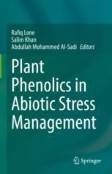Search
Search Results
-
Role of Nanotechnology in Phenolic Compound Dynamics
Nanotechnology has become a promising technique in almost every field of today’s life. Nanoparticles, which range in size from 1 to 100 μm, are...
-
Phenolic Composition of Honeybush and Changes During Herbal Tea and Extract Production
Several Cyclopia species, including C. intermedia, C. subternata, and C. genistoides, are used to make honeybush tea. All species belonging to this...
-
Role of Phenolic Compounds in Disease Resistance to Plants
Plants produce a diverse range of compounds that have no direct role in their normal growth and development known as secondary metabolites. These...
-
Phenolic Biosynthesis and Metabolic Pathways to Alleviate Stresses in Plants
Phenolics are the plant secondary metabolites which play salient physicochemical roles entire lifespan. Phenolics are produced under various biotic...
-
Phenolic Compounds and Peroxide Parameters of Olive Oils Obtained from Local Varieties
Olive oil is known not only for its bitter and fruity taste, but also for its health potential, which is assumed to be due to its phenolic...

-
Bacterial Biodegradation of Phenolic Hydrocarbons
Phenolic hydrocarbons are among the most important pollutants with mutagenic, toxic, and carcinogenic potentials. Because of being thermodynamic...
-
Antioxidant activity and phenolic content of herbal infusions from medicinal plants used in Argentina
Currently, teas and herbal infusions represent an important part of the human diet. Most contain phenolic compounds with high antioxidant activity,...

-
Disease and Pest Resistance through Phenolic Substances in the Solanaceae
With the expansion of the planting area of the Solanaceae, diseases and pests have become the main threats to Solanaceae production. Research on the...

-
Wine Phenolic Compounds: Chemistry and Biological Properties
Phenolics compounds are products of secondary metabolism of plants, they are particularly important in grapevines because of their effects on wine...
-
Maturation-related phenolic compounds in cachaça aged in oak barrels: influence of reuses
The aging process, although not mandatory in the production of cachaça , adds sensory complexity to the beverage. During the aging process, several...

-
Strawberries from Konya in the Central Anatolia Region of Türkiye: Phenolic Profile, Antioxidant Potential and Mineral Composition
In this study, the antioxidant capacities, phenolic properties, and minerals of strawberries produced in four different districts of Konya/Türkiye...

-
Phenolic-protein interactions: insight from in-silico analyses – a review
Phenolic compounds are ubiquitous plant secondary metabolites that possess various biological activities and are known to interact with proteins,...

-
Phenolic Compounds and Nanotechnology: Application During Biotic Stress Management in Agricultural Sector and Occupational Health Impacts
Current agricultural practices are becoming unsustainable due to extreme phase of climatic change and growing population. Phenolic compounds are...
-
Phenolic compounds induce ferroptosis-like death by promoting hydroxyl radical generation in the Fenton reaction
Phenolic compounds are industrially versatile chemicals, also the most ubiquitous pollutants. Recently, biosynthesis and biodegradation of phenols...

-
Acidification induce chemical and microbial variation in tea plantation soils and bacterial degradation of the key acidifying phenolic acids
Camellia sinensis is an important economic plant grown in southern subtropical hilly areas, especially in China, mainly for the production of tea....

-
Phenolic Profile and Antioxidant Capacity of Blackberry Fruits (Rubus spp) Grown in Colombia
Worldwide, the market and consumption of berries has shown an increase as a result of the versatility that the fruit presents when marketed in...

-
Natural Variation in the Phenolic Composition of Rooibos and Changes During Production of Herbal Tea and Other Products
Rooibos tea is made from an endemic South African plant, Aspalathus linearis (family Fabaceae), also known by its common name, rooibos (“red bush”)....
-
Understory plant diversity and phenolic allelochemicals across a range of Eucalyptus grandis plantation ages
Allelopathy is an important mechanism in Eucalyptus plantations that causes detrimental impacts on understory diversity. Phenolic compounds are the...

-
Phenolic Compounds and Biological Activity of Extracts of Calli and Native Licorice Plants
AbstractLicorice root is traditionally used in medicine due to its content of saponins and flavonoids. Licorice leaves are not used as pharmacopoeial...

-
Anti-aging of phenolic-rich Acanthus ebracteatus Vahl. extracts
BackgroundSea holly has long been used in traditional Thai medicine for longevity, skin inflammation, skin dullness and as a treatment for itchy...

